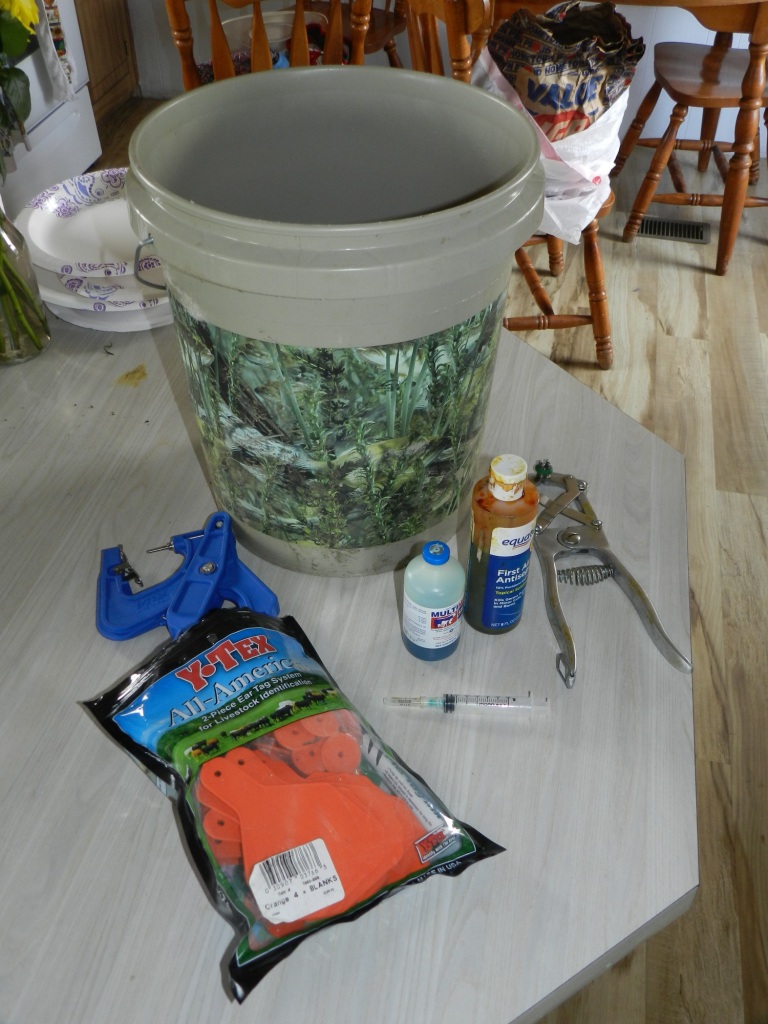Apparently, it is springtime now. It sure doesn’t feel that way on the farm.

For us, spring doesn’t really emerge until April or May. But, spring will arrive to our neck of the woods soon enough and with it, preparation for our 2019 calving season. We pushed back our breeding season last summer by one week and therefore, we anticipate calves to start hitting the ground around the 2nd week of May or so. Calving times vary by regions and individual operations, and we realize that many producers are already in the midst of their calving seasons.
Today’s post highlights two previous posts, related to the calving season.
This post breaks-down what we consider to be our “must-have” items for your calving bucket. As with all things, be sure to tailor your calving bucket for your specific needs.

Make sure your calving bucket is cleaned-up, re-stocked and ready to roll well before your calving season starts. It is no fun and very stressful to be scrambling at the last minute, trying to locate items, while you have a newborn calf in the field ready to be worked. For us, we only have a short period of time to be able to catch that calf before they are able to out-run us.
For a calf born in the morning, we better have worked it by the end of that day or else we won’t be catching it! With that being said, though, we always allow the mother and newborn calf to develop a bond and to nurse to their hearts content before we work the calf.

That Cow is Gonna Calve Soon! – Signs of the Onset of Labor
This post has been our most popular post in the history of our site. We still find it to be very relevant and informative for those seeking information on what to be watching for as their cow approaches calving time. The signs of the onset of labor in cows that we see today are probably just the same as they were from the beginning of time.
I am a very big visual learner, and when I was outlining the content for this post, I wanted to make sure that it was descriptive, both with text and visual aids. There is incredible value in providing a detailed write-up for folks on this topic. Just a quick search on the internet proves that. By adding descriptive visual aids (i.e., pictures) the reader is able to take that text description to the next level and hopefully, apply it to real-life situations.
I say this a lot in my posts and I will say it again here, spend time watching and getting to know your animals. The more in-tune you are with your animals, their mannerisms, their behaviors, the herd dynamic, the more advantage you will have in detecting the signs preceding labor. That has been my experience these last six years. I can walk out to the cows and scan the herd and get a pretty good idea if someone is in the early stages of labor. By that, I mean if they are going to deliver a calf that very day. Some signs are more obvious than others (water sac has emerged or a cow is bedded down, pushing! ha!). It may be a very slight lift in the tail (right before the water sac is pushed out, that tail will be lifted HIGH and usually bent to the side and there will be NOTHING subtle about it by that point in labor) or a shift in personality that you are only going to recognize if you know your cows and their normal dispositions and behaviors. I have had times where during the 1st check of the morning I have noticed that a particular cow was holding her tailed ever so slightly lifted. You have to really pay attention to notice it. By my next check, a few hours later, that cow is usually in labor or already delivered her calf.
Be sure to check out
That Cow is Gonna Calve Soon! – Signs of the Onset of Labor for more information and plenty of pictures.
In closing, here are a couple pictures from seasons past of births I was blessed enough to be able to witness.

my watch point.



Happy Calving!
Leave a Reply